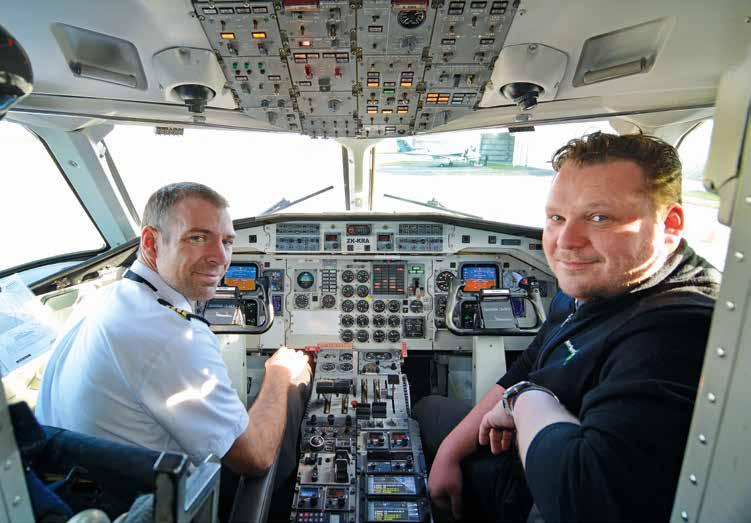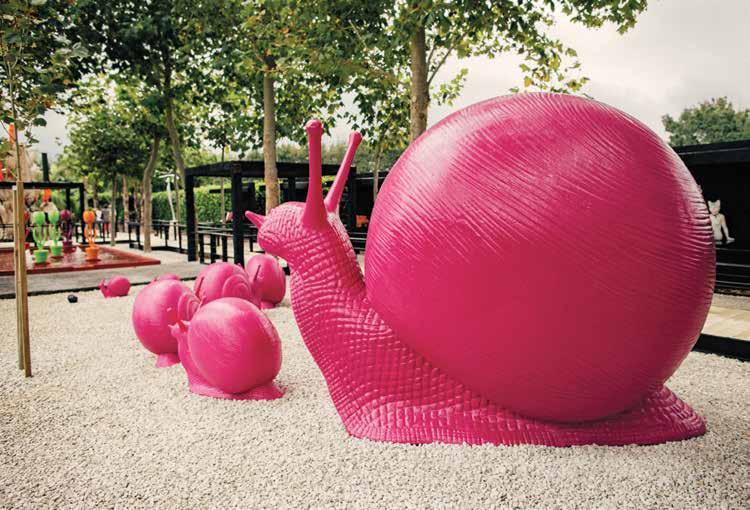
3 minute read
The River Queens
WHANGANUI WAS ONCE THE RIVERBOAT CAPITAL OF THE COUNTRY, and thanks to dedicated locals it is regaining its crown.
For local Māori the Whanganui River was sacred, considered an ancestor and a living being. But for Māori and the early settlers alike it was also a vital way of connecting communities; instead of dividing the land, the river provided a means to reach towns and villages that would otherwise take days of overland travel.
Advertisement
The Whanganui River was a perfect example. Waka traversed it for generations and from the late 1800s through to WWII, a small fleet of riverboats plied it between the coast and Taumarunui, carrying trade and fuel, post and people to the settlements along its banks. As Phil Pollero, manager of the restored Paddle Steamer Waimarie and the excellent Riverboat Museum, puts it, the Whanganui was vital for local communities and of national importance. “Back in time the Whanganui was like State Highway 1,” he says, “linking Auckland and Wellington. People could travel to Taumarunui, then down the river to Whanganui and on to Wellington. There was also a lot of tourist traffic – the trip was known as the Rhine of New Zealand, and old photos of the riverboats show everyone dressed up with the men in hats and ties and the women in their Sunday best. A riverboat trip was more than just transport, it was a bit of an occasion.”

One of the prime movers behind this was local identity Alexander Hatrick. Born in Australia, Hatrick worked his way into a profitable trading firm that eventually saw him set up his own shipping company. In 1892 he signed a deal with travel agency Thomas Cook to run riverboats up the Whanganui, and had the foresight to advertise the cruise nationally and overseas; the river soon gained something of an international reputation and business boomed – at its height Hatrick had more than ten vessels in his fleet.

Engineer John checking one of the Waimarie's engines which drive the paddle wheels.
The Waimarie has been in use up until the early 50s when an accident left her damaged and listing, and before long she was flooded and filling with silt.
The MV Wairua was salvaged in 1987 by a group of locals who embarked on a challenging 19-year restoration. “The main challenge,” says Owner Sam Mordey, “was in trying to retain as much of the original vessel as possible. The key ethos was sharing the history of the vessel and the story of the riverboat service, so during the restoration it was a case of repair not replace wherever possible.” The Paddle Steamer Waimarie, meanwhile, was rescued from her watery grave in 1993.

She had been in use up until the early 50s when an accident left her damaged and listing, and before long she was flooded and filling with silt. It would take 67,000 hours of volunteer work to get her back in shape, but the results speak for themselves. “I think part of the attraction is not just the Waimarie and the river cruise,” says Phil Pollero, “but the magic of steam. There’s something about a steampowered vessel that captures the imagination, the sounds of the engine and the paddle wheels making their way through the water. Sometimes when a steam train is running we’ll make sure the Waimarie meets the train as it crosses the river – when they are both doing their thing and the steam whistles sound, it really is special.”
Also special is the relative new kid on the riverboat block, the Adventurer II. In its original guise of Adventurer, it operated for several years before grounding and being taken on by local Hayden Potaka.
Now she will once again ply the river, but with a different focus. “The Adventurer II will tell the stories of local Māori, and how important the river was and remains for us,” he says. “We’ll also be serving Māori kai like hangi when docked, in addition to things like canapés on board, so this is a pretty unique experience and we’re excited that it has all come together and we’ll be welcoming our first passengers in November.”
The Whanganui riverboats were an intrinsic part of our history. And thanks to that part of our national psyche that isn’t afraid to take on the impossible, we can all enjoy a river cruise just like when they ruled the river.






